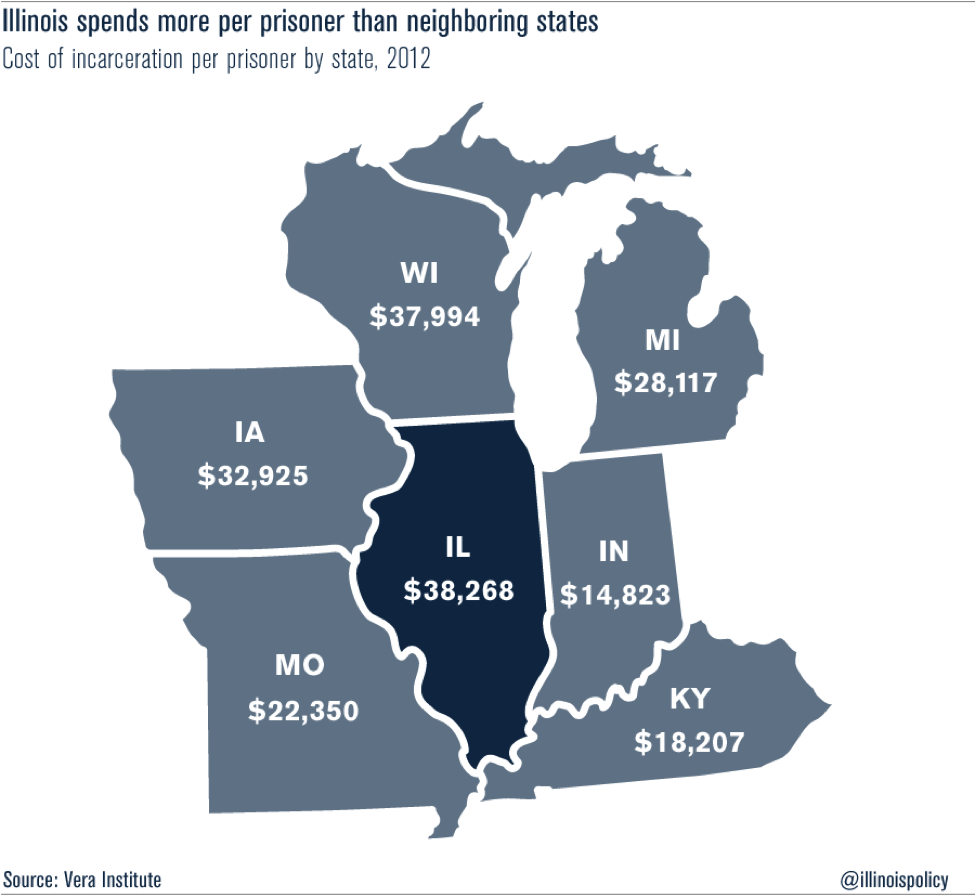Illinois can cut crime and prison-population growth at the same time
States across the country have made major gains on both fronts.
Many people think reducing incarceration rates will inevitably lead to an increase in crime. But that’s simply not true, according to research by Pew Charitable Trusts. Pew arrived at this conclusion by drawing on incarceration and crime-trend data compiled for 2008-2013 from the Bureau of Justice Statistics and Federal Bureau of Investigation crime reports.
The report found that 32 states have seen a decline in crime while their incarceration rates fell.
In fact, the nationwide crime rate fell by 16 percent during this timeframe. Only two states – South Dakota and New Hampshire – saw crime-rate increases above 0.5 percent during this period.
While the crime rate fell nearly everywhere, the decline in crime was greater in those states that also decreased their incarceration rates, according to Pew. Therefore, there is no reason to assume the 23 percent crime-rate reduction in Illinois – tied for the fifth-largest decrease in crime in the country – happened because Illinois increased its incarceration rate by 7 percent. Crime in Florida, for instance, fell by 26 percent as its imprisonment rate dropped by 6 percent, and crime in Maryland fell by 24 percent while the incarceration rate fell by 12 percent. Of the 10 states home to the country’s largest drops in crime, eight reduced incarceration rates.
If Illinois, like nearly all states, is seeing decreasing crime rates, one must question why, unlike other states, Illinois continues to incarcerate more and more people.
This is especially true when continued growth in incarceration has contributed to state budget difficulties. Incarceration isn’t free. At the same time the state increases the number of people flowing through prisons, Illinois is also spending more than its neighbors on per-prisoner incarceration costs – especially when you include indirect prison-related costs, such as pension and health-care contributions for state employees:
So how can Illinois safely reduce its prison population? It’s important to keep in mind that prison isn’t always the appropriate punishment for all offenders, especially nonviolent ones.
Illinois lawmakers can start by ending mandatory minimum sentencing and instead allowing judges to tailor punishments to an individual’s criminal history and the risk they pose to the public. According to polling conducted by the Reason Foundation, 77 percent of the country supports ending mandatory minimum sentencing entirely for certain nonviolent offenses.
It’s also possible to reduce the prison population by diverting more nonviolent offenders directly to drug- and mental-health treatment programs. The Bureau of Justice Statistics estimates that nearly a quarter of state prison and jail populations suffer from mental illnesses and as many as 60 percent struggle with substance abuse – including illicit drug use and alcoholism. Directly addressing these problems, instead of relying solely on incarceration, is a more cost-effective way to solve behavioral issues leading to crime and close the revolving door between courts and prison.
Most of the country is having great success lowering both crime and incarceration. There’s no reason why Illinois can’t learn to do the same.
Image credit: Chris Yarzab


